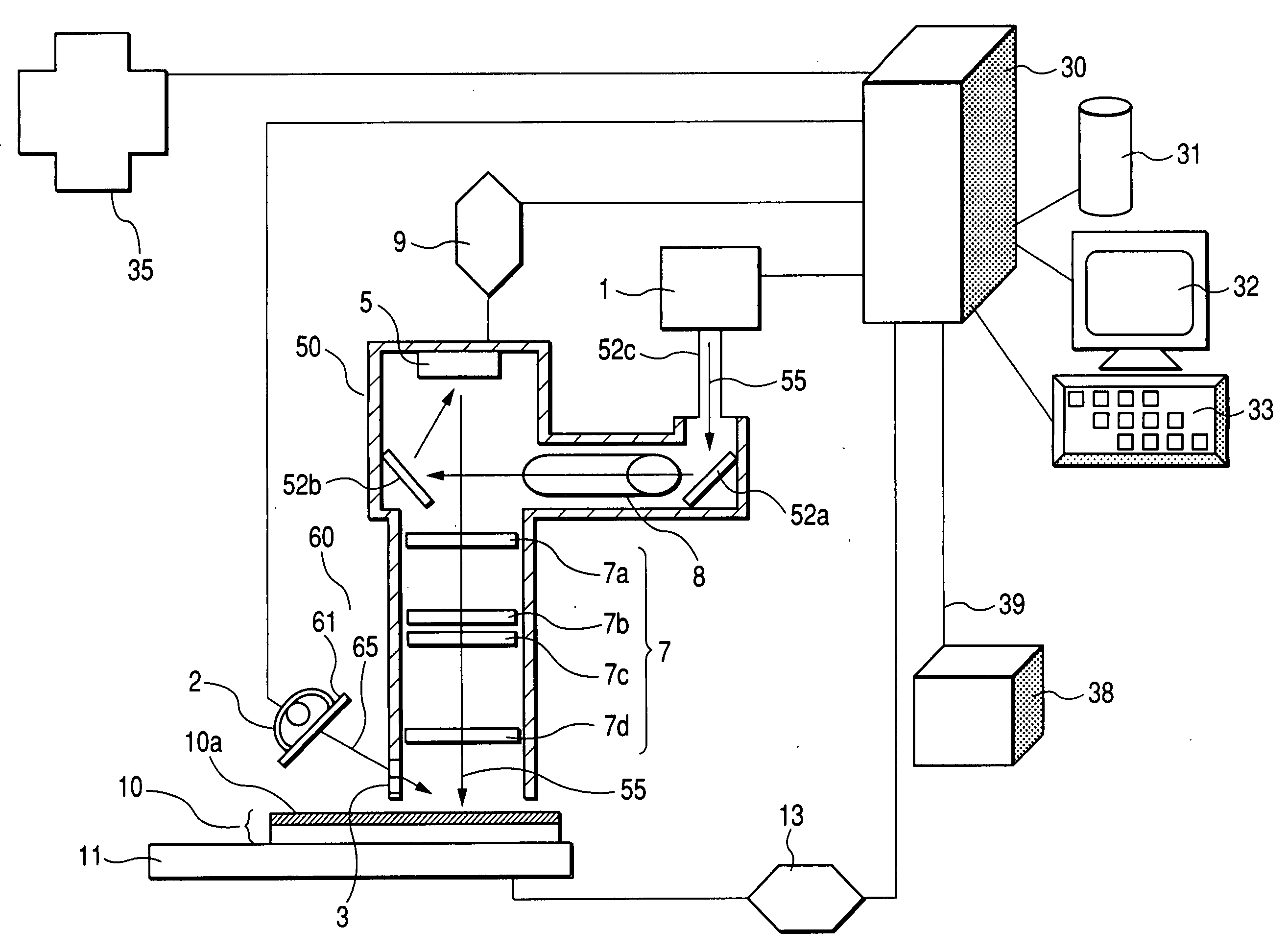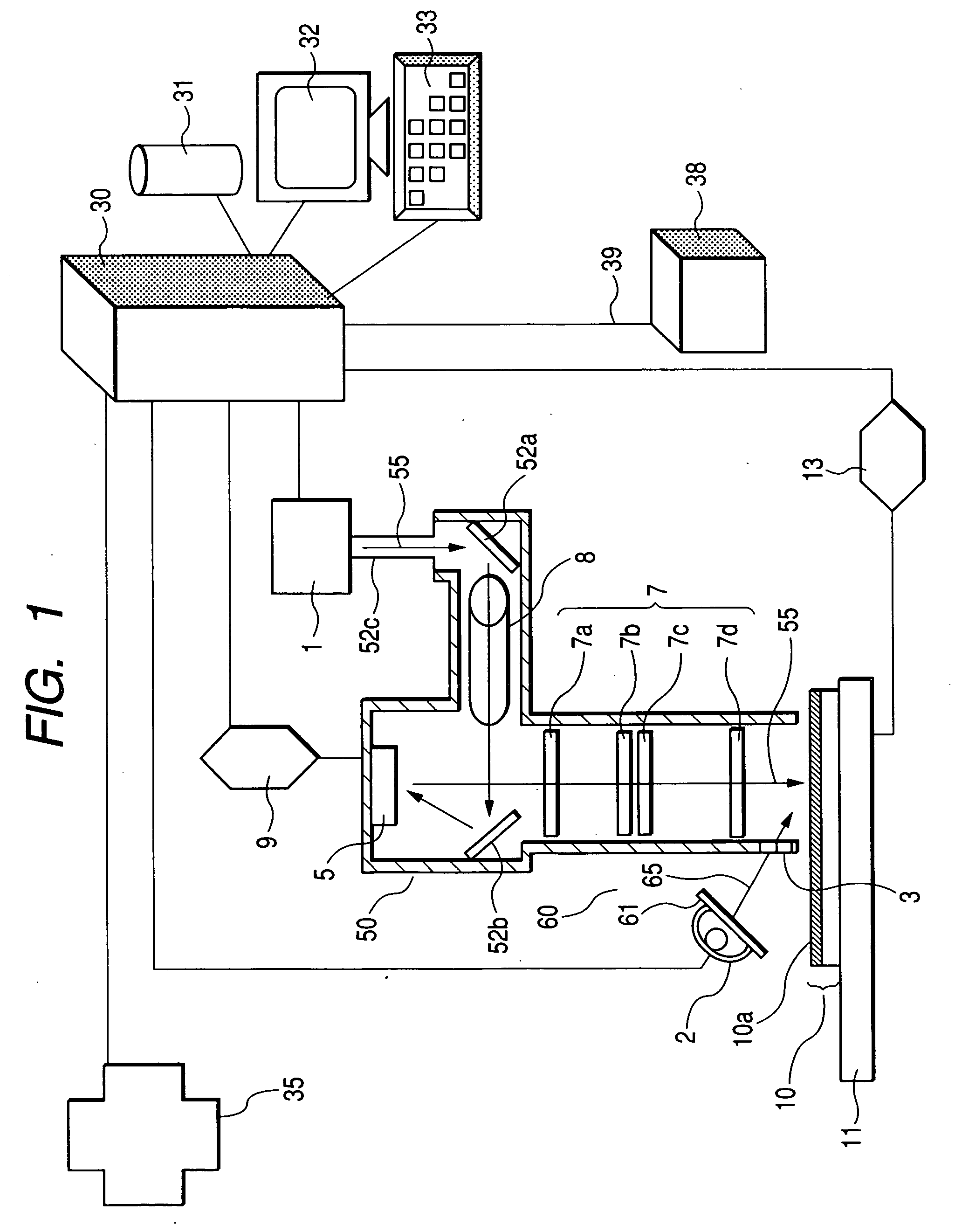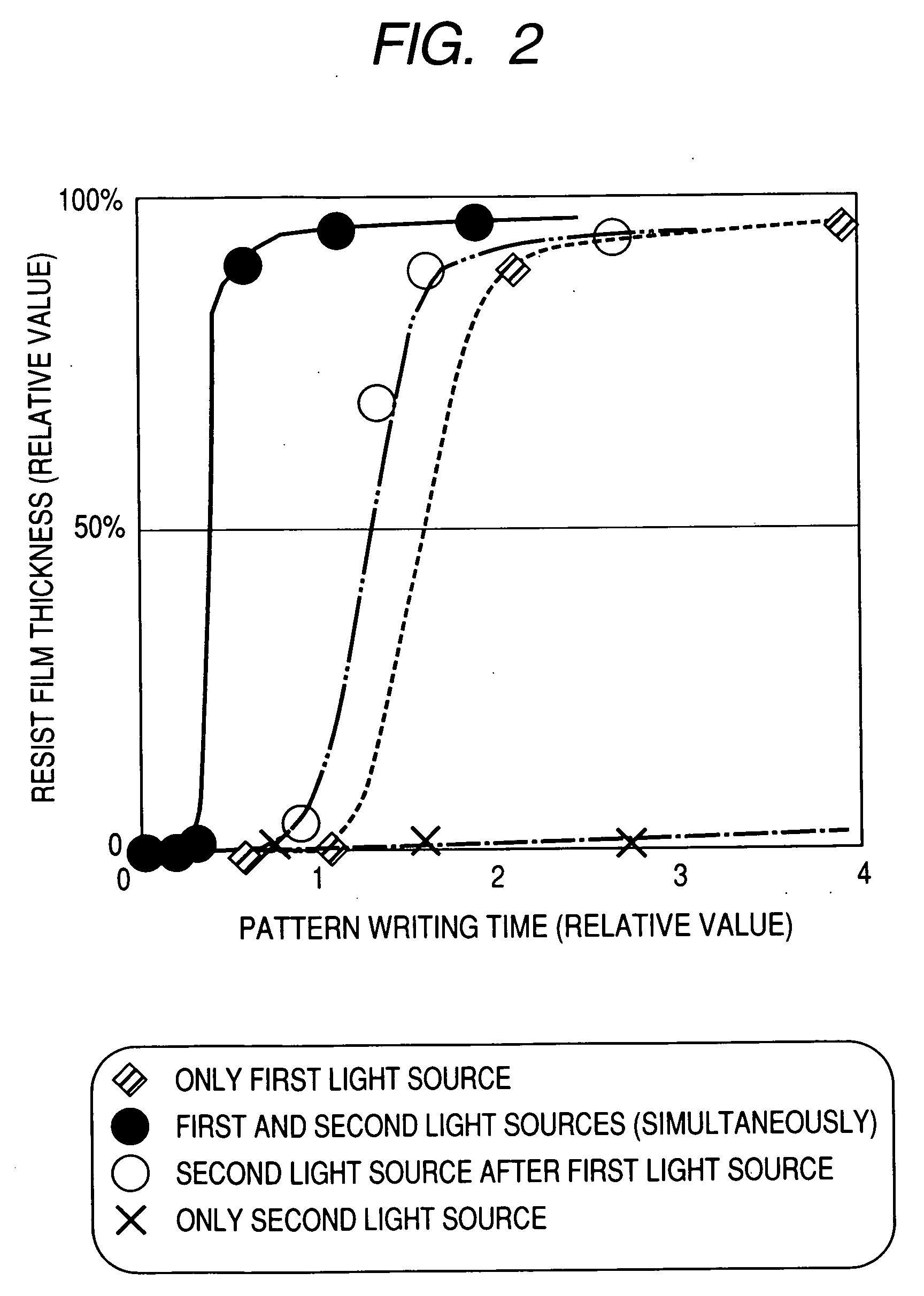Exposure apparatus and exposing method and method of manufacturing a printed wiring board
a technology of exposing apparatus and printed wiring board, which is applied in the direction of printers, instruments, data switching networks, etc., can solve the problems of high-output expensive laser sources, inefficient photosensitive reactions, and low photon energy and quantum yield, and achieve low cost, high throughput, and stabilization
- Summary
- Abstract
- Description
- Claims
- Application Information
AI Technical Summary
Benefits of technology
Problems solved by technology
Method used
Image
Examples
first embodiment
[0042]FIG. 1 is a schematic constructional diagram showing a mask-less exposure apparatus according to the present invention. The mask-less exposure apparatus includes a stage 11, a first light source 1, a first light irradiation optical system 50, a second light source 2, and a second light irradiation optical system 60. The stage 11 moves with a board 10 to be exposed placed thereon. The board 10 has a photosensitive resin layer 10a with sensitivity to ultraviolet radiation formed thereon. The first light source 1 emits light containing a wavelength component, of violet radiation, in the wavelength range of 400 to 410 nm. The first light irradiation optical system 50 modulates a radiant flux 55 emitted from the first light source 1 based on data on a desired exposure pattern, and then images a pattern on the photosensitive resin layer 10a of the board 10 to be exposed which is placed on the stage 11 to expose and write the pattern. The second light source 2 emits light containing ...
second embodiment
[0077]FIG. 9 is a schematic constructional diagram showing the mask-less exposure apparatus according to the present invention. The mask-less exposure apparatus of this embodiment includes a stage 11, a first light source 1, a first light irradiation optical system 50, a second light source 2, and a second light irradiation optical system 60. The stage 11 moves with a board 10 to be exposed placed thereon. The board 10 has a photosensitive resin layer 10a with sensitivity to ultraviolet radiation formed thereon. The first light source 1 emits light containing a wavelength component, of the ultraviolet radiation, in the wavelength range of 350 to 390 nm. The first light irradiation system 50 images a pattern on the photosensitive resin layer 10a on the board 10 to be exposed which is placed on the stage 11 to expose and write the pattern while beam-scanning a radiant flux 55 emitted from the first light source 1 based on data on a desired exposure pattern. The second light source 2 e...
third embodiment
[0084]FIG. 10 is a schematic constructional diagram showing a mask-less exposure apparatus according to the present invention. The mask-less exposure apparatus of this embodiment includes a stage 11, a first light source 1, a second light source 2, an optical mixing system 4, and an optical mixing light irradiation optical system 16. The stage 11 moves with a board 10 to be exposed placed thereon. The board 10 has a photosensitive resin layer 10a with sensitivity to ultraviolet radiation formed thereon. The first light source 1 emits light containing a wavelength component, of the violet radiation, in the wavelength range of 400 to 410 nm. The second light source 2 emits light containing at least a part of a wavelength component, from the visible light to the infrared radiation, in the wavelength range of 450 to 2500 nm. The optical mixing system 4 optically mixes a radiant flux 55 emitted from the first light source 1 and a radiant flux 65 emitted from the second light source 2. Al...
PUM
 Login to View More
Login to View More Abstract
Description
Claims
Application Information
 Login to View More
Login to View More - R&D
- Intellectual Property
- Life Sciences
- Materials
- Tech Scout
- Unparalleled Data Quality
- Higher Quality Content
- 60% Fewer Hallucinations
Browse by: Latest US Patents, China's latest patents, Technical Efficacy Thesaurus, Application Domain, Technology Topic, Popular Technical Reports.
© 2025 PatSnap. All rights reserved.Legal|Privacy policy|Modern Slavery Act Transparency Statement|Sitemap|About US| Contact US: help@patsnap.com



